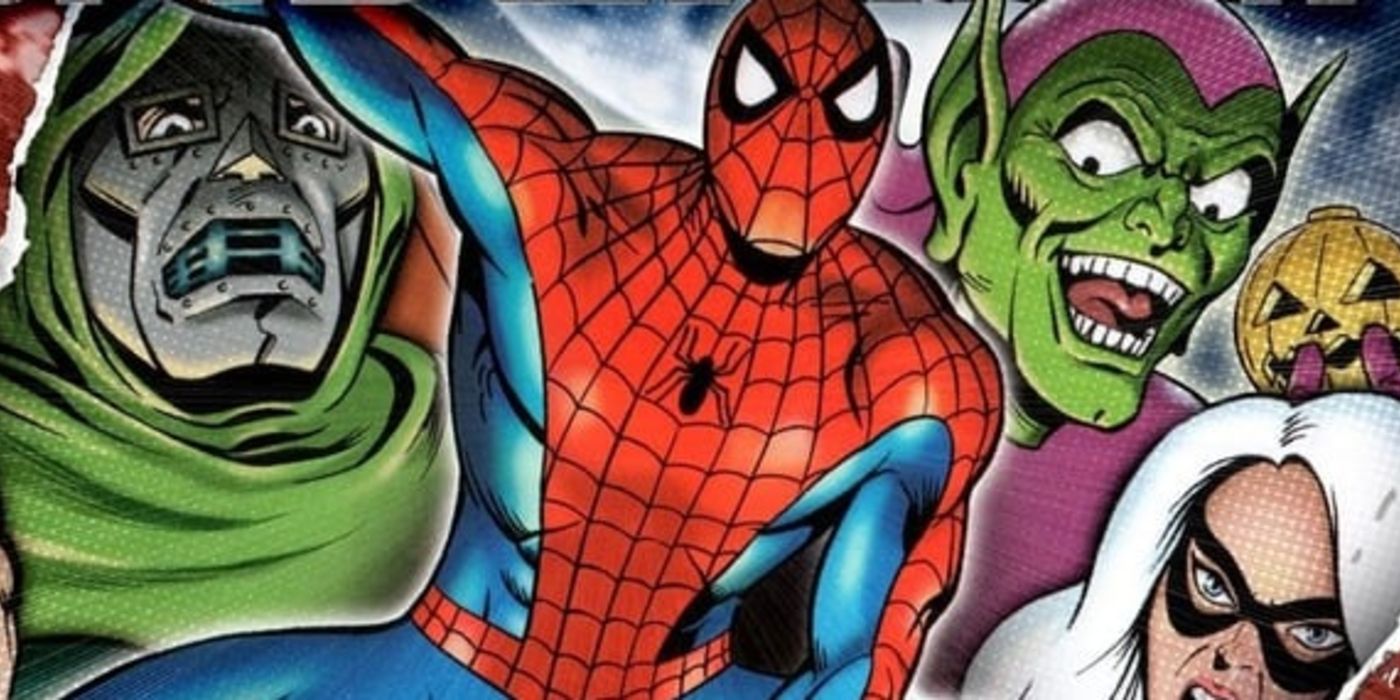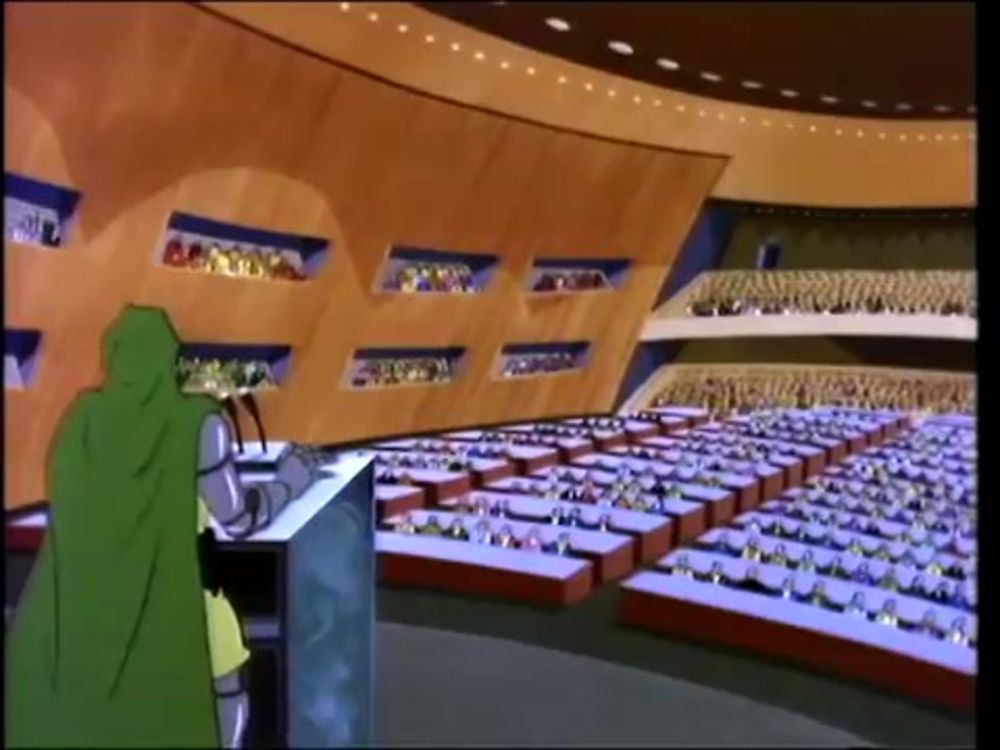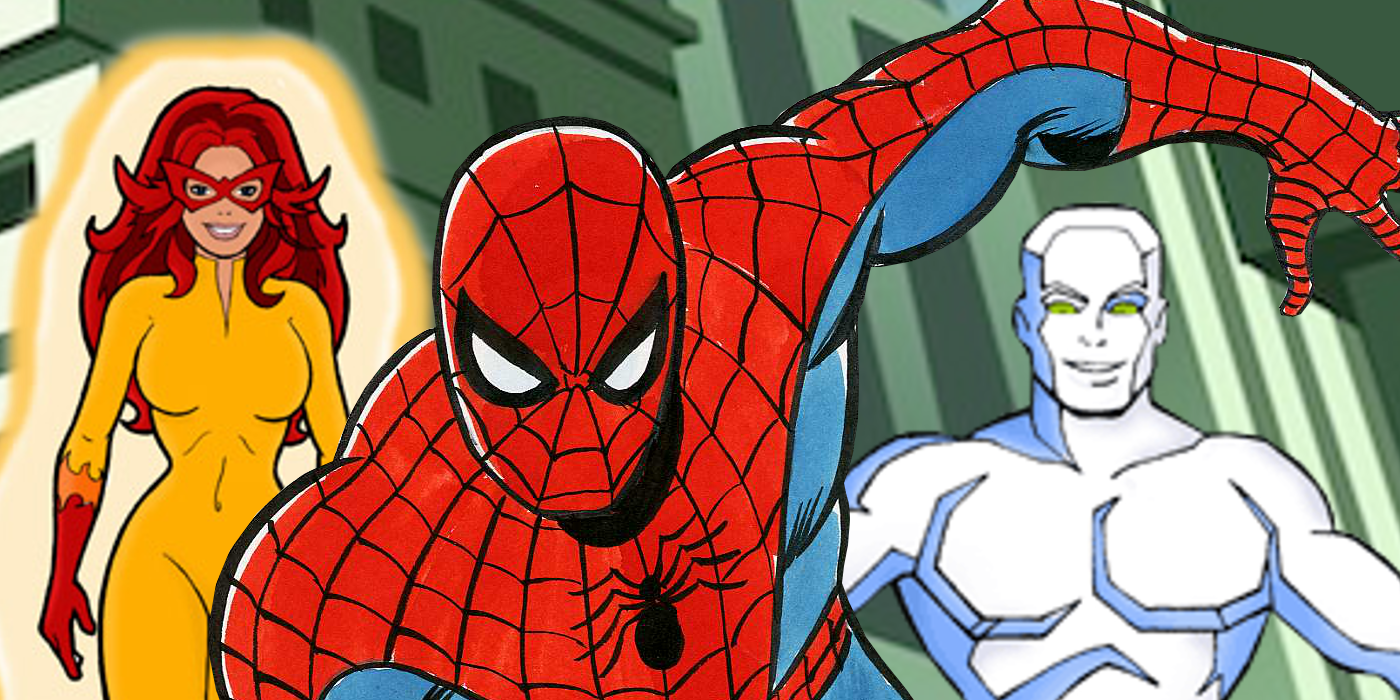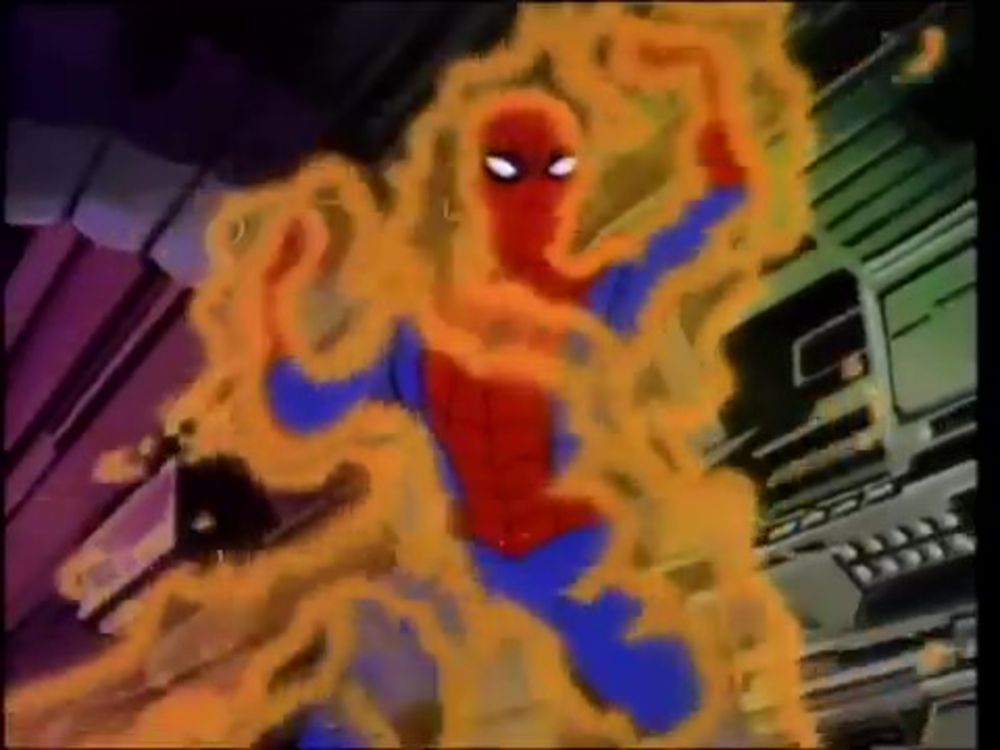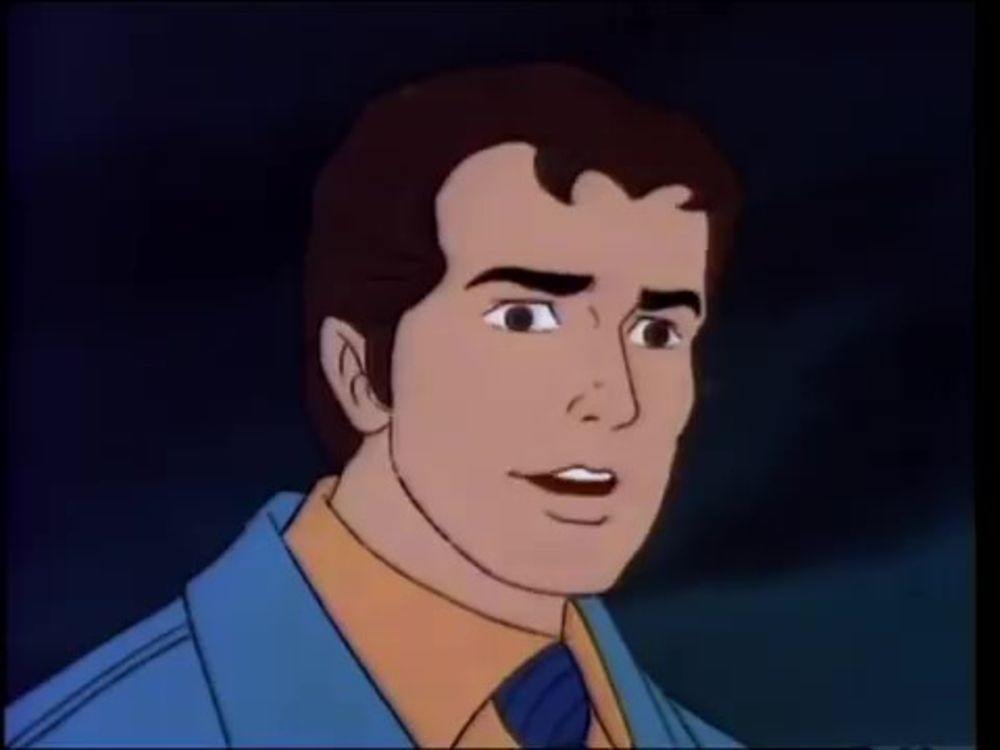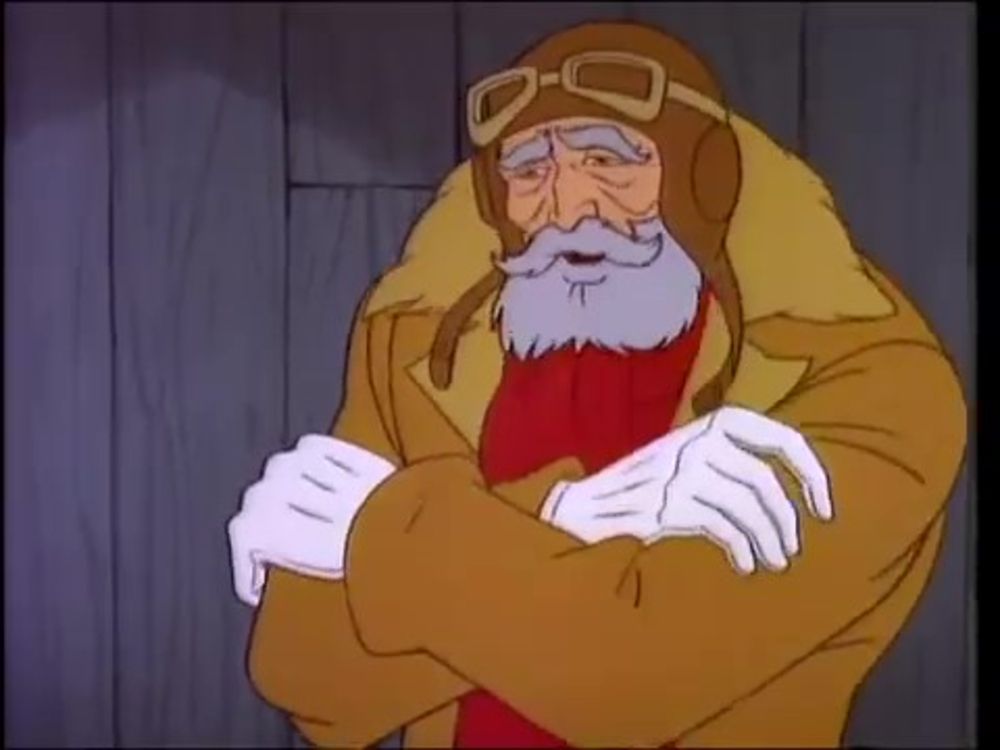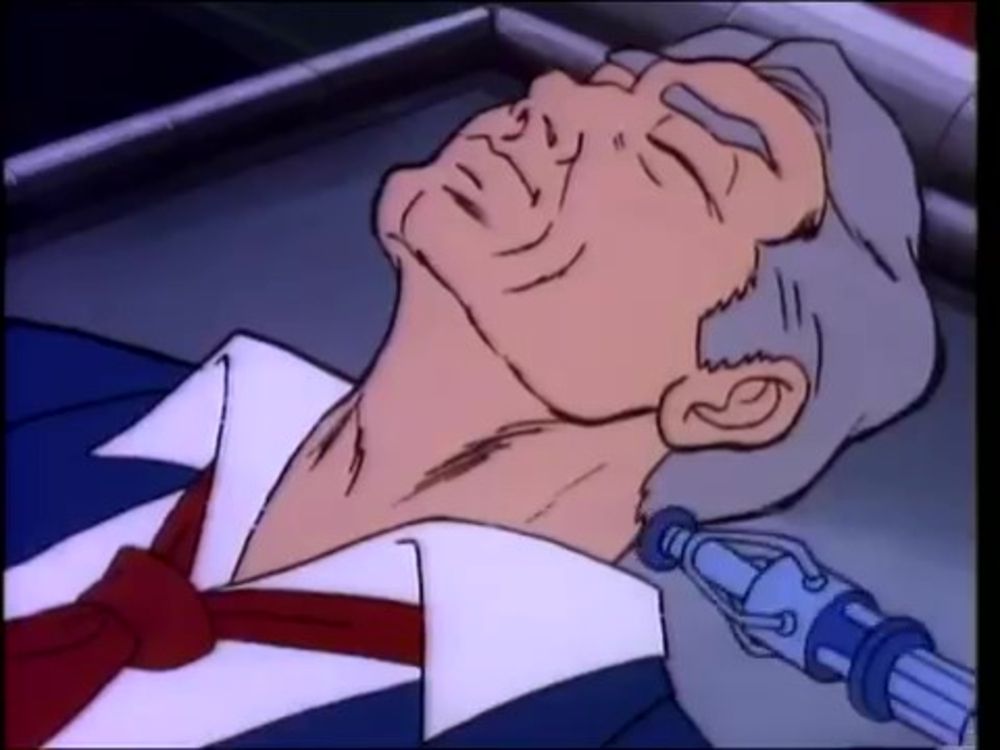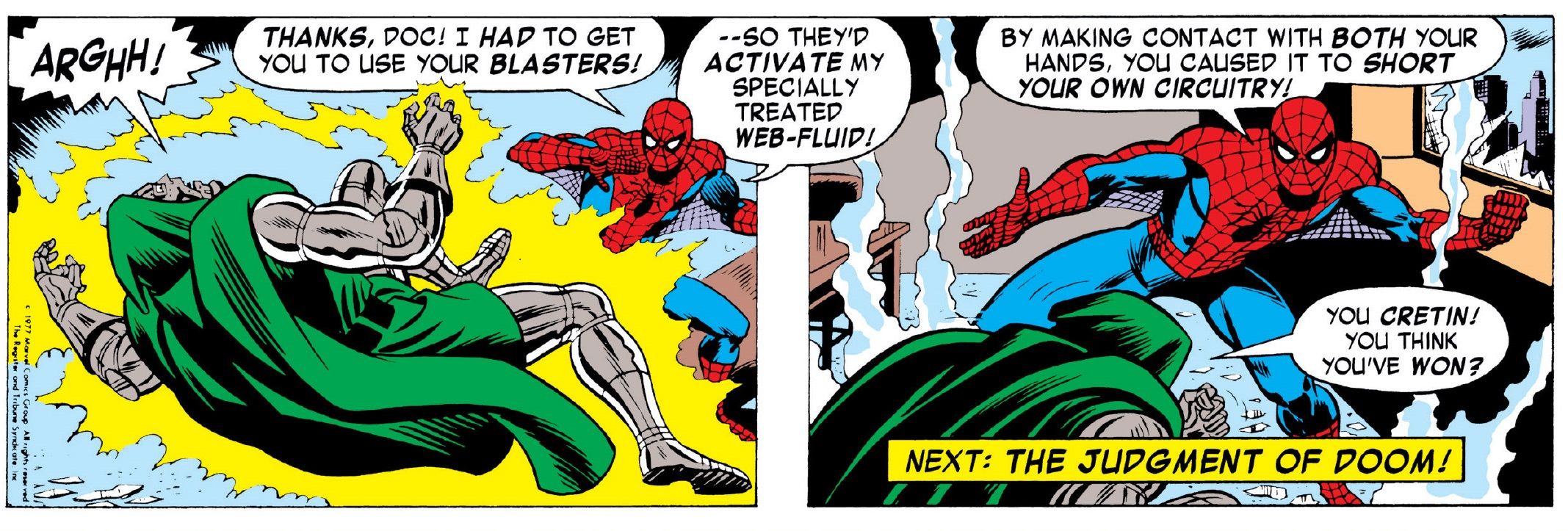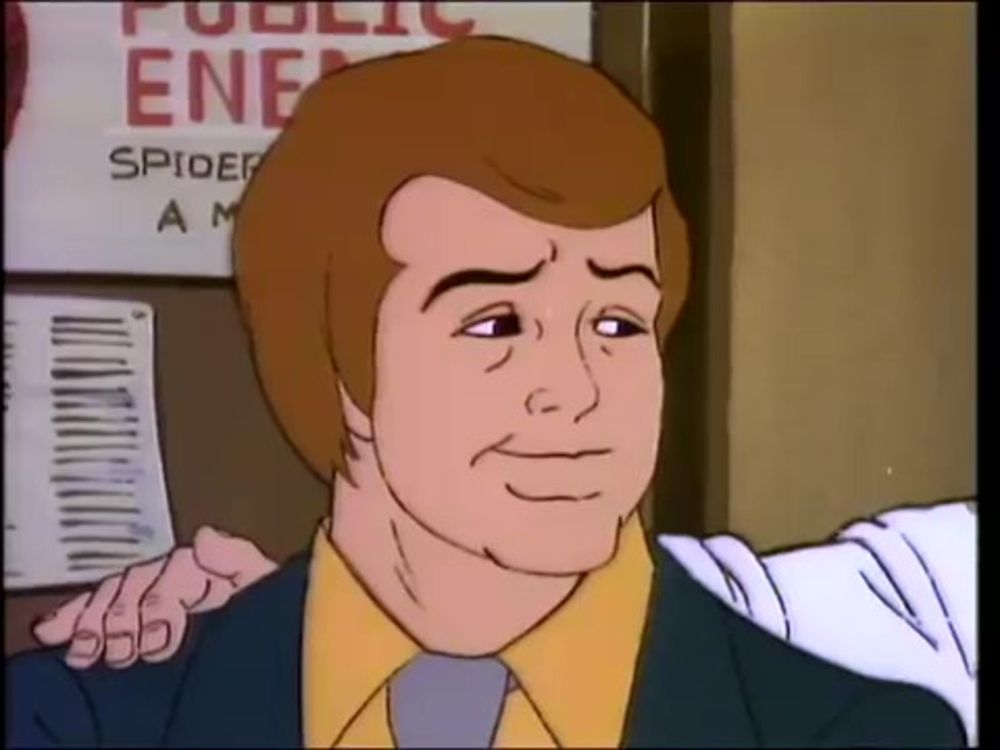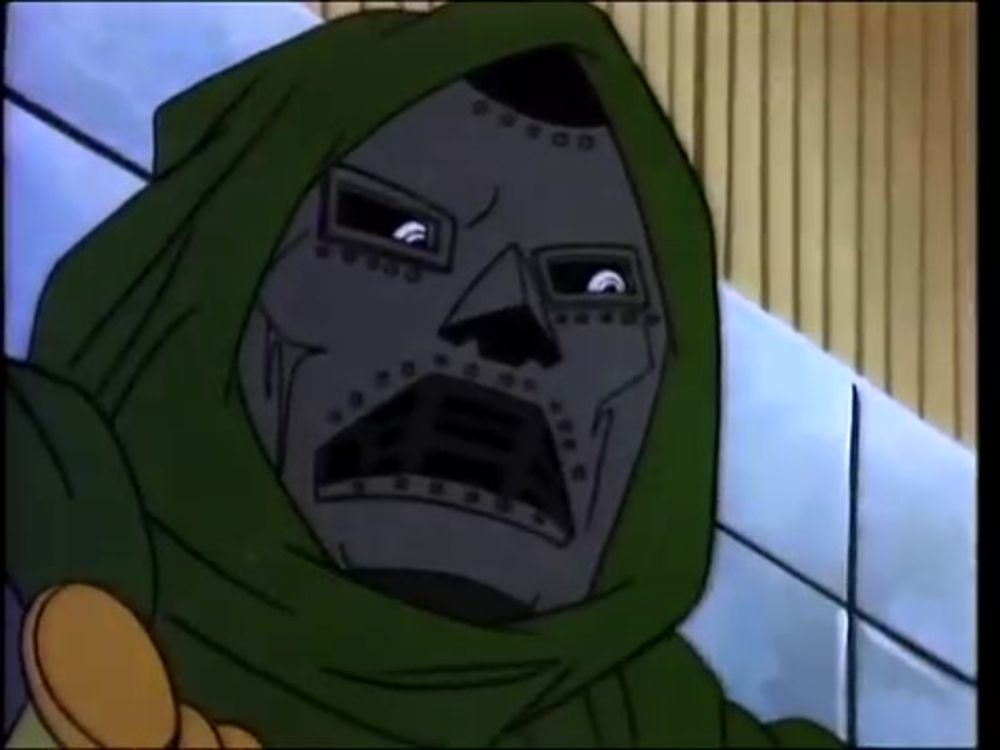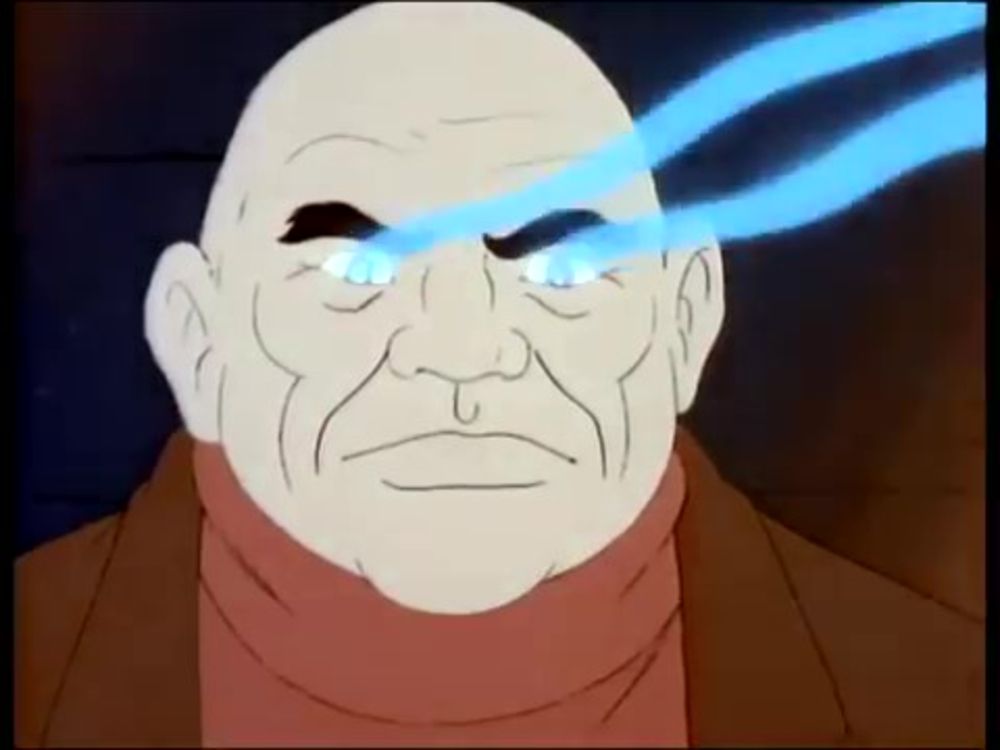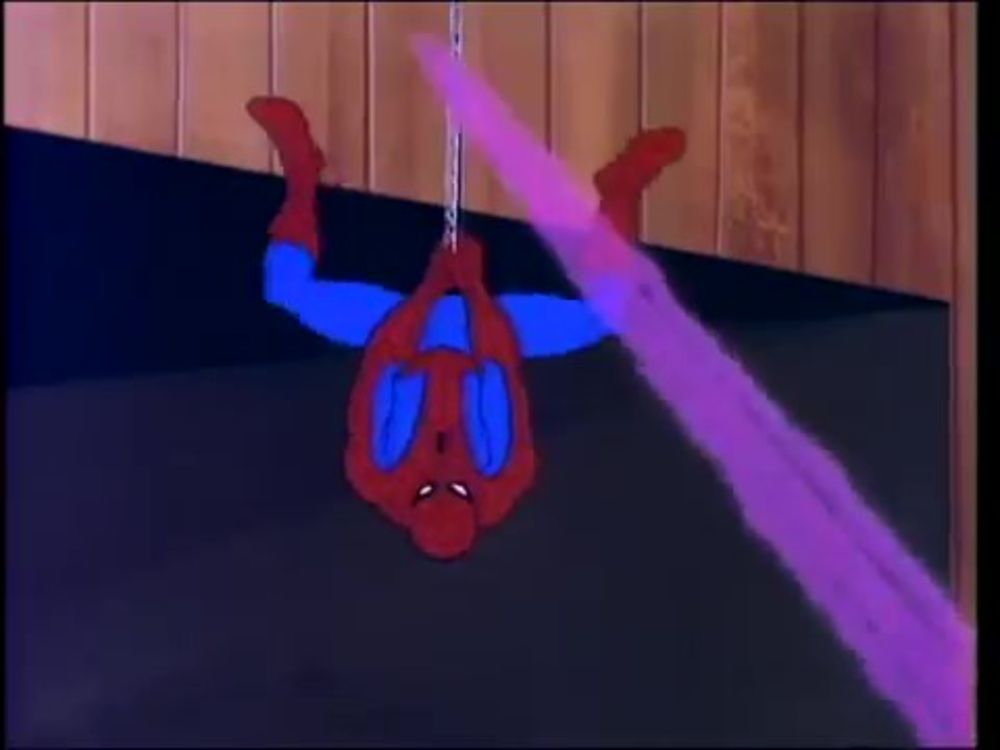Welcome to Adventure(s) Time's 95th installment, a look at animated heroes of the past. This week, a suggestion from reader CyberV, who wanted a feature on the "two times Doctor Doom tried to take over the world from, bizarrely, the U.N. Extra odd since the U.N. couldn't DO that." If you have any suggestions for the future, I'm happy to hear them. Just contact me on Twitter.
So, what the heck is CyberV talking about? You watched every episode of Spider-Man: The Animated Series, wondered just what a computer-animated Spider-Man series was doing on MTV, mourned the early demise of Spectacular Spider-Man, and suffered through the painful "humor" of Ultimate Spider-Man. When did Doctor Doom attempt a takeover of the United Nations?!
It occurred in what has to be the most obscure of the Spidey cartoons, 1981's syndicated Spider-Man. This isn't the 1960s cartoon that brought us that famous theme song, or the early-1980s camp classic Spider-Man & His Amazing Friends. It's an independent series produced as the launch of Marvel Productions, the same company that would later give us G. I. Joe, Transformers and Dungeons & Dragons (but, ironically, very few shows starring Marvel heroes).
Syndicated cartoons are traditionally funded by toy lines, which makes 1981's Spider-Man an oddity. No mass merchandising (perhaps no merchandising at all) exists for the series. It's an actually a nice-enough looking show for the era -- some episodes are even animated by respected anime studio Toei -- which indicates a decent amount of money was shelled out. Still, the series never received a major push, and remains pretty unknown to this day.
Overshadowing Spider-Man in every respect is, of course, Spider-Man & His Amazing Friends. It's Amazing Friends that received the big banner ads on the cover of all Marvel comics in 1981. And remains to this day an inspiration for nostalgia projects. Eighties kids all seem to remember the show, and its campiness and goofy setup (Spidey and two teen heroes bunking at Aunt May's, with a secret lab in their bedroom) earns it a cult following.
Spider-Man, however, is a more loyal adaptation of the basic status quo from the comics. Surprisingly, the two shows debuted on the same date, Sept. 12, 1981. Spider-Man doesn't feature Iceman or Firestar as regulars (although a few Marvel heroes do make guest appearances), and even casts a different voice actor as Spider-Man. It does share animation models with Amazing Friends, however, and even uses the same musical score.
The episode CyberV is referring to is "Dr. Doom, Master of the World." It's the second episode of the series, debuting on Sept. 19, 1981. Animation veteran Jeffrey Scott presents the story of that classic Spidey foe, Doctor Doom, attempting a world takeover by kidnapping the president and brainwashing the U.N. Typical Spider-Man material, of course.
Seriously, even though the action element is just off for Spider-Man, the show does maintain some classic elements. Peter Parker is a young photographer, hustling for photos for the bombastic J. Jonah Jameson. He's courting Jonah's secretary, Betty Brant, although it seems fate stands in his way. And he even has to sneak past his overprotective Aunt May when coming home late after a battle with Doom's robots (pronounced "ro-bits" by Spidey actor Ted Schwartz).
The tone of the series alternates between the earnest feel of a classic Marvel comic and the goofiness of 1980s Saturday morning TV. The designs are clearly from the John Romita school, an early indication of Marvel Productions' desire to bring comic aesthetics to animation. The plot, meanwhile, lessens the tension by cramming in silly elements, such as Spider-Man renting a plane from a crusty old pilot to search for the missing Air Force One.
After taking control of the American president, Doom also places members of the U.N. assembly under his thrall. While giving Spider-Man a nuclear-powered robot as a distraction, Doom makes his grand play. He directs his mind-controlled U.N. assembly to vote Doctor Doom "master of the world." Amazingly, the show gives kids enough credit for knowing what the U.N. is, but not enough to recognize this plot as gibberish. Unless Doom has enough mind control devices to zap around seven billion people, this declaration is essentially meaningless.
In a climax that occurs in literally a minute, Spider-Man gains the upper hand by reprogramming Doom's robots and siccing them on their master. Doom simply gives up and flies away. However, he does swear Spidey hasn't seen the last of him, the departing villain threat no '80s cartoon could ever resist.
You might think that using such an absurd plot is an example of Hollywood not understanding the material -- just something hacked together by a screenwriter who cared little for the comics. But it turns out, the basis of the plot came from none other than Stan Lee and John Romita.
The Amazing Spider-Man newspaper strip debuted on Jan. 3, 1977, opening with ... well, Spider-Man purchasing a newspaper.
But where this leads is a quirky story that has the Daily Bugle putting public pressure on the United Nations to invite Doctor Doom to New York. Why would Jonah Jameson want such a thing? Because Doom has been so effective in eliminating crime in his native Latveria, it stands to reason that he'd have brilliant ideas for ... eliminating Spider-Man, too.
It's a shaky premise, one that Lee seems to regret as the story evolves. Later strips establish the public as deeply opposed to Doom's visit, and the Bugle is alone in its advocacy. Even the U.N. leaders question just why they've agreed to this. So ... why is Doom in New York again?
By the way, IDW Publishing recently released a collection of these strips. Quality scans weren't easy to find, so you'll notice the lettering is often replaced by a digital touch-up job. It's a nice font, but it's weird to see clean, perfectly aligned typography mixed in with old-school hand lettering.
As this is the inaugural story arc, you witness the creators attempting to find the rhythm of a daily strip. It's a brutal format for an ongoing continuity, really. The creators have no guarantee that the Sunday readers have read the preceding weekday strips. Also, some papers don't carry the larger Sunday strip at all, so the daily readers have to also be kept up to speed. That creates a situation where maybe one or two strips a week advance the plot at all.
Ultimately, Dr. Doom declares the U.N. should turn its power over to him. He is, after all, the person best suited to end the threat of terrorism.
Spider-Man has to elude the police and sneak into the United Nations, equipped with some gimmick webbing. He faces down Doom, who falls for the trap and ends up electrocuting himself.
When he realizes the U.N. isn't going to just hand authority of the world over to him (as if they could do that in the first place), Doom exits. 1977 will just have to deal with the threat of terrorism without the aid of a mad supervillain.
DESIGN-Y
Both the cartoon and comic strip consciously avoided the 1960s look of Peter Parker. He has longer hair, sideburns, and typically wears open-collar shirts instead of suits. Romita has said that updating Peter's look was a priority at the time, reintroducing the character to a wider audience.
And nothing says 1981 like Mortimer, a new character for the animated series, introduced as Jonah Jameson's nephew (and rival for Peter's job). Check out that stylish hair helmet.
I LOVE THE '80s
Peter invites Betty to go see a movie about a "super-guy from another planet, who's allergic to green rocks." Superman II had been released in theaters just a few months before the show's debut.
HEY, I KNOW THAT VOICE
Radio personality and voiceover announcer Brad Crandall voices Doom. And it's a fantastic performance! He captures the arrogance and menace very well, and the electronic "tin" added to his voice is a nice touch. Crandall was a famous New York radio personality for years, and even Howard Stern cites him as an influence.
"HUH?" MOMENT
Kingpin's laser eyes from the opening credits are something. Too bad the Netflix Daredevil series chose to drop this element of his powerset.
LIKE INVITING THE MAFIA TO PREACH TO BARETTA!
There's no getting around the sheer goofiness of these stories, which doesn't mean they lack charm, or there's no craft to admire. They're just starting from such a weird premise, it's hard to think of them as Spider-Man stories. Yet, we have the Daily Bugle harassing Spidey, Aunt May fussing over Peter, and Spider-Man continually stuck in "hard luck" circumstances.
Likely, Stan Lee wasn't sure how to introduce the concept to newspaper readers. And the animation producers had to conceive a way to adapt the typically "violent" action of superheroes to the strict standards of kids' TV. So, you end up with absurd premises that don't sound like Spider-Man stories, but still have hints of what the diehard fans want. Arguing over which of these is more ridiculous could go on all day. Is Jonah Jameson carrying enough influence to sway the U.N. any sillier than Doom's mind-control devices?
At the very least, fans did have some alternative to the far more loose adaptation of Amazing Friends. And the newspaper strip reunited the classic team of Lee and Romita, so who could complain about that?
Romita's art is fantastic in these early strips. Not only is he adjusting to the format's restraints, but he's even working in caricatures of real life figures like Henry Kissinger and Barbara Walters. Stan's wisecracks and occasionally lyrical prose are also smarter than most of the comics page material. Some of this might be of interest only to hardcore fans, but overall, it's fun to look back.
So that’s all for now. I've begun a new review series on Chris Claremont's 2000 return to the X-Men on my blog! You can also check out my Kindle Worlds novels about a certain group of Real American Heroes for free over at Smashwords.

